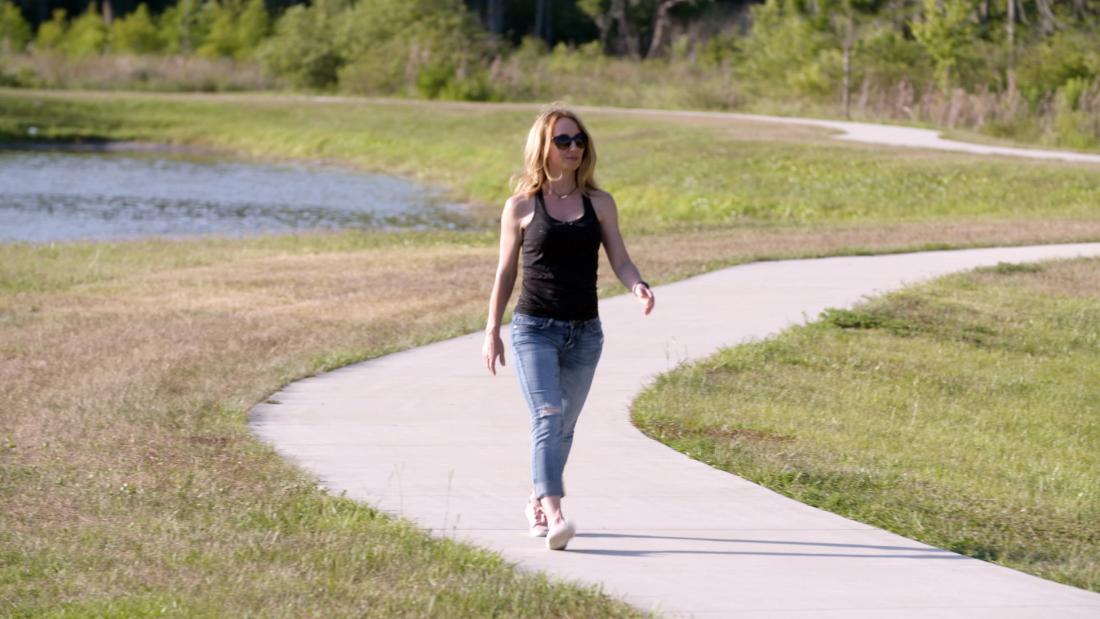How to best burn calories while walking - 4 minutes read

Dana Santas, known as the " Mobility Maker ," is a certified strength and conditioning specialist and mind-body coach in professional sports, and is the author of the book "Practical Solutions for Back Pain Relief."
(CNN) It's no secret that walking is good for you. Many of us are trying to get in those recommended 10,000 steps a day that our wearable fitness technology urges us to achieve.
But how many calories are we actually burning, and how can we get the most out of those steps?
There are a lot of different wearables and online calculators to assess how many calories are burned walking. However, they are not entirely accurate, research has shown.
In fact, most people are actually burning more than generally reported by fitness monitoring tools, one study in the Journal of Applied Physiology found. In 97% of cases examined, too few calories burned were reported, researchers revealed.
Important note: Before beginning any new exercise program, consult your doctor. Stop immediately if you feel pain.
So how do you get an accurate idea of your calorie-burning potential when walking?
To get the most calorie-burning benefits, then, it would seem that walking at a consistently brisk pace that keeps your heart pumping would make the most sense.
Yet there is research showing that changing your pace to vary your intensity, and, consequently, your heart rate, throughout your walk can increase your metabolic rate by 6% to 20% more than remaining at a steady pace throughout the duration of your walk.
What's more, the National Institutes of Health reports that when it comes to using walking to increase your life span and overall health, getting in your steps is actually more important than the overall intensity with which you achieve them.
Pay attention to your heart rate and how you feel
Make no mistake, wearable technologies aren't entirely inaccurate. They can certainly provide an idea of progress toward your calorie-burning goals. Using a fitness tracker to help you recognize when you reach your target heart rate zones can help you maximize the calorie-burning and health-boosting benefits of your walk.
The American College of Sports Medicine puts your target heart rate for moderate-intensity physical activity at 64% to 76% of your maximum heart rate. Because walking is not a high-intensity exercise, you are going to achieve the biggest caloric burn doing it at moderate intensity, which means a brisk but sustainable pace for you.
Keeping with our example of a 48-year-old person, a moderate-intensity heart rate would be between about 110 and 131 beats per minute. During this type of exercise, you will feel your breathing rate increase but should still be able to speak in complete sentences.
You achieve light-intensity exercise at a heart rate of 57% to 63%, according to ACSM. For a 48-year-old, that would equate to about 98 to 108 beats per minute, which should feel like a very comfortable pace, where you can easily carry on full conversations.
Walking is often touted as a great fat-burning exercise, and for good reason.
You can't really walk at higher intensities because of the nature of the exercise; therefore, you end up in more moderate- to low-intensity zones, where you tend to burn more fat.
The existence of a "fat-burning zone," where you only burn belly fat, is mostly a fallacy, but there is some truth to being able to leverage your heart rate to get your body to preferentially burn fat for fuel.
When you're walking at a lighter intensity with your heart rate in the 57% to 63% range, you are more likely to be using fat for fuel. Because you are walking more slowly, with a slower heart rate, you will be expending less caloric energy — but the calories you are burning will conceivably be coming from fat.
Most of us learned the art of walking as toddlers, but many of us developed bad habits as we aged that impact our gait.
Take the advice in the video above to ensure you are using good walking posture, back-and-forth arm swing and evenly distributing your weight. Like any other form of exercise, walking with bad form can lead to chronic pain and even injury.
Whether your goal is fat loss, increased fitness or simply enhancing your overall health and wellness, walking offers all these benefits and more.
Source: CNN
Powered by NewsAPI.org